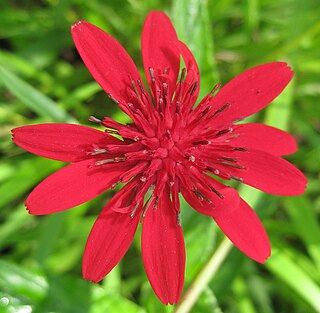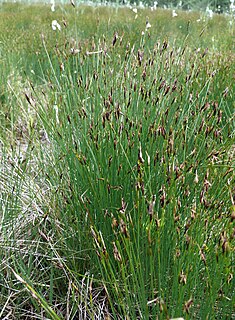Related Research Articles

Nepeta is a genus of flowering plants in the family Lamiaceae. The genus name is reportedly in reference to Nepete, an ancient Etruscan city. There are about 250 species.

The Cucurbitaceae, also called cucurbits or the gourd family, are a plant family consisting of about 965 species in around 95 genera, of which the most important to humans are:

Mentha is a genus of plants in the family Lamiaceae. The exact distinction between species is unclear; it is estimated that 13 to 24 species exist. Hybridization occurs naturally where some species range overlap. Many hybrids and cultivars are known.

The Mimosoideae are trees, herbs, lianas, and shrubs that mostly grow in tropical and subtropical climates. They comprise a clade, previously placed at the subfamily or family level in the flowering plant family Fabaceae (Leguminosae). In previous classifications, Mimosoideae refers to what was formerly considered the tribe Mimoseae. Characteristics include flowers in radial symmetry with petals that are valvate in bud, and have numerous showy, prominent stamens. Mimosoideae comprise about 40 genera and 2,500 species.

Scaevola is a genus of flowering plants in the Goodenia family, Goodeniaceae. It consists of more than 130 species, with the center of diversity being Australia and Polynesia. There are around 80 species in Australia, occurring throughout the continent, in a variety of habitats. Diversity is highest in the South West, where around 40 species are endemic.

Lupinus, commonly known as lupin or lupine, is a genus of flowering plants in the legume family Fabaceae. The genus includes over 199 species, with centers of diversity in North and South America. Smaller centers occur in North Africa and the Mediterranean. They are widely cultivated, both as a food source and as ornamental plants, although in New Zealand's South Island, introduced lupins are viewed as a severe environmental threat.

Bauhinia is a large genus of flowering plants in the subfamily Cercidoideae and tribe Bauhinieae, in the large flowering plant family Fabaceae, with a pantropical distribution. The genus was named after the Bauhin brothers Gaspard and Johann, Swiss-French botanists.

Stachys is one of the largest genera in the flowering plant family Lamiaceae. Estimates of the number of species in the genus vary from about 300, to about 450. The type species for the genus is Stachys sylvatica. Stachys is in the subfamily Lamioideae. Generic limits and relationships in this subfamily are poorly known.

Leucas is a genus of plants in the family Lamiaceae, first described by Robert Brown in 1810. It contains over 200 species, widespread over much of Africa, and southern and eastern Asia with a few species in Queensland and on various islands in the Indian Ocean.

Tribulus is a genus of plants in the family Zygophyllaceae and found in diverse climates and soils worldwide from latitudes 35°S to 47°N. The best-known member is T. terrestris, a widespread invasive species and weed.

Leucaena is a genus of flowering plants in the mimosoid clade of the subfamily Caesalpinioideae of the legume family Fabaceae. It contains about 24 species of trees and shrubs, which are commonly known as leadtrees. They are native to the Americas, ranging from Texas in the United States south to Peru. The generic name is derived from the Greek word λευκός (leukos), meaning "white," referring to the flowers.
Leptoclinium is a genus of flowering plants in the sunflower family.
Microspermum is a genus of Mexican flowering plants in the boneset tribe within the sunflower family.

Cremanthodium is a large genus of flowering plants in the daisy family.

Erythrocephalum is a genus of African flowering plants in the daisy family.

Faujasia is a genus of flowering plants in the daisy family, native to certain islands in the Indian Ocean.
Jacmaia is a genus of flowering plants in the daisy family. This generic name is an anagram derived from Jamaica.

Schoenus is a genus of sedges. Plants of this genus mainly occur in Australia and Southeast Asia with some species widespread in scattered locations in Europe, Asia, Africa, and the Americas. Bogrush is a common name for these plants.

Echinopepon is a genus of flowering plants in the family Cucurbitaceae, native to the southwestern United States, Mexico, Central America, and South America. Tendrillate vines, their prickly fruits are operculate, with the prickles themselves being stipitate glandular.
References
- ↑ Jeffrey, Charles. 1988. Kew Bulletin 43(2): 274
- ↑ Tropicos, Kinghamia C. Jeffrey
- ↑ "Flann, C (ed) 2009+ Global Compositae Checklist". Archived from the original on 2014-12-11. Retrieved 2014-12-11.
- ↑ The Plant List search for Kinghamia